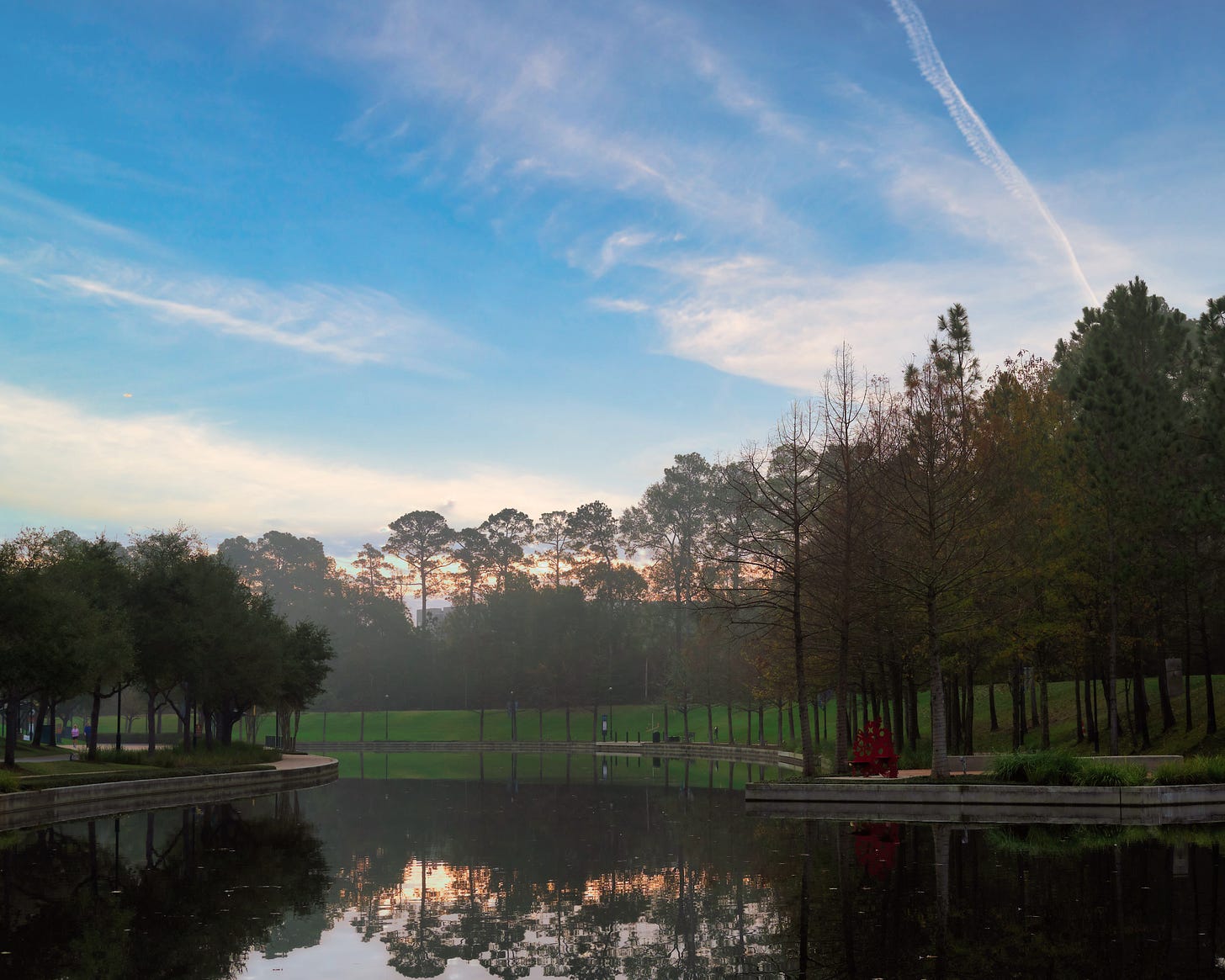How an oil billionaire changed how we live
50 years on, a Texas suburb stands as a testament to one man's vision for how to build a better city
The Houston Chronicle’s Claire Partain had an article this week about the creation of The Woodlands, the master-planned community north of Houston. It includes a nice shout out for my biography of George P. Mitchell:
In 1964, The Woodlands' future founder George Mitchell was not known for real estate development. A prominent Houston wildcatter and geologist, Mitchell's passions expanded into building new communities aimed at fixing contemporary urban ills, according to Loren C. Steffy in "George P. Mitchell: Fracking, Sustainability, and an Unorthodox Quest to Save the Planet."
Mitchell, who had already purchased timberland in South Montgomery County, began assembling the acreage that would eventually become The Woodlands in the mid-1960s, Steffy wrote.
The Woodlands has changed a lot in the past 50 years, and while it isn’t the community Mitchell originally envisioned — he wanted it to become part of Houston, for example — I think he also recognized that once you start a community, its residents are entitled to their own ideas of what it should be.
That said, Mitchell’s originally planning still guides the development today. The Woodlands began as part of the New Community Program, which Congress created in 1970 to build communities that would be free of the problems and blight that plagued many larger cities at the time.
The Chronicle piece notes how Mitchell drew ideas and expertise from other “new towns” such as Reston, Virginia, and Columbia, Maryland. Mitchell was reluctant to accept government funding for the project, but he realized it would give him more control over development than other forms of financing. He received $50 million in government-backed loan guarantees to launch the project.
Most New Community projects defaulted on their loans. The Woodlands was the only one to repay in full.
People tend to think of Mitchell as an oil billionaire. He unleashed hydraulic fracturing, or “fracking” as we now know it, on the world. But he also helped to redefine the American city, to change the way millions of people live and work. And 50 years later, he still is.
Shameless self-promotion: If you’d like to know more about Mitchell and his seemingly conflicting interests in fracking and sustainability, you can order a copy here. If you’d rather to listen to the melodious sounds of my voice telling the story, you can download the audio book.




